How Guam Is Transforming Itself Into America’s Pacific Fortress
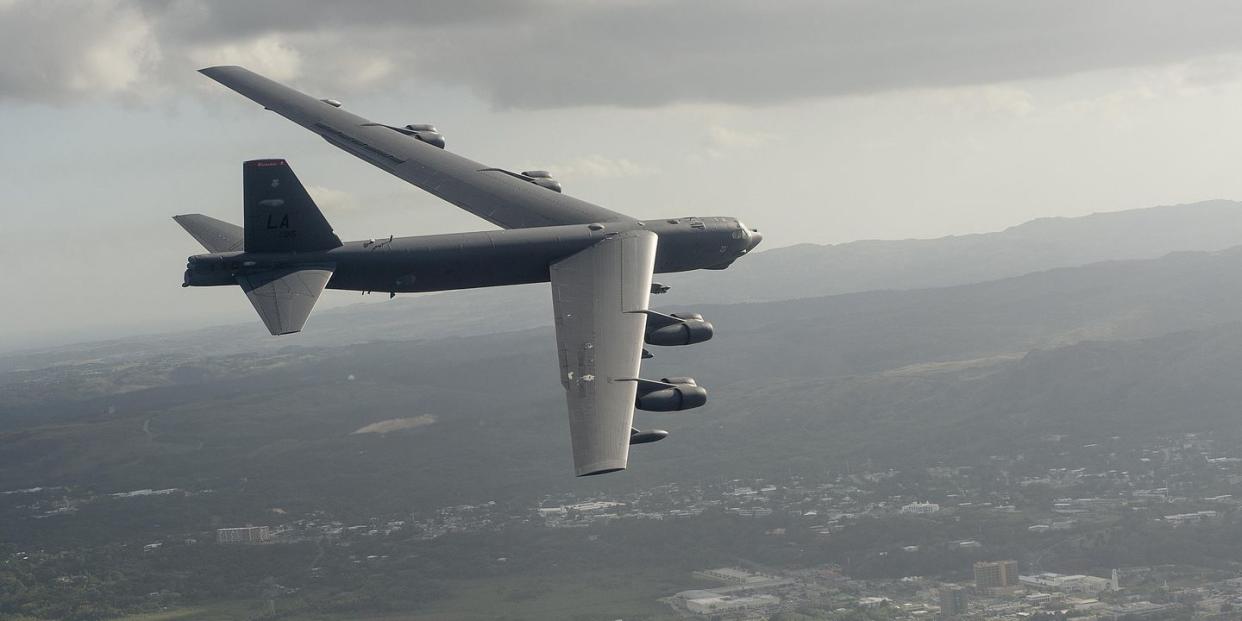
The U.S. territory of Guam, located in the Western Pacific Ocean, is becoming a major focal point of a potential future war with China.
The 200-square-mile island will be home to forces from all four of the major armed services.
Despite its distance from Asia, there’s a very good chance Guam will come under missile attack if war in the Pacific breaks out.
One of the smallest territories in the United States is becoming the most heavily fortified. At just 212 square miles in area, Guam is one of the most militarized places in the U.S., with elements of the Army, Navy, Air Force, and Marine Corps all digging in and preparing for a long-term strategic rivalry with China. The island’s importance, however, means it could become the target of long-range air and missile attacks if the U.S.-Chinese Cold War eventually goes hot.
✈︎ Don’t miss any of our best-in-class military and defense coverage. Join our squad.
Guam’s association with the United States dates back to more than 100 years ago, when Spain seized the island during the Spanish-American War. It became a U.S. territory in 1898, and Imperial Japan invaded and occupied the island during World War II. The U.S. liberated Guam in 1945, whereupon it reverted to being a territory.
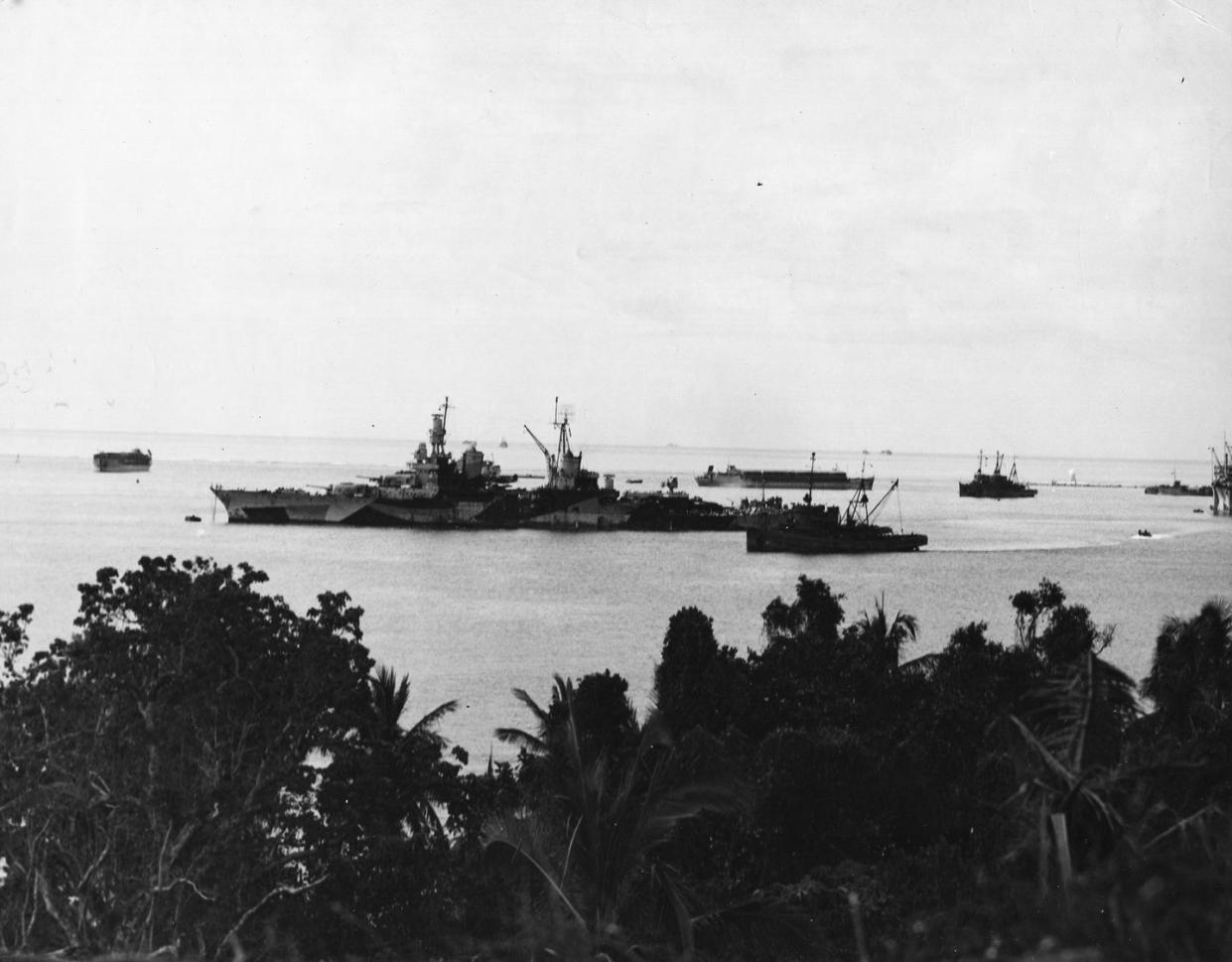
The Cold War with the Soviet Union and the People’s Republic of China ensured that after the war, U.S. forces never really left Guam. It became a major base for opposing communist expansion—a place where, unlike foreign bases, Washington could basically do whatever it wanted. During the Vietnam War, Andersen Air Force Base became a launch pad for massed B-52 Stratofortress raids into North Vietnam, and the island’s Apra Harbor was a staging area for Polaris nuclear missile submarines covering the Soviet Far East and China.
Guam’s strategic importance receded at the end of the Cold War, and the island became a popular vacation spot for Japanese tourists. Now, however, faced with China’s rapidly growing air and sea forces, Guam is once again becoming a key strategic location. Washington sees Guam as the linchpin of an American defense of the Pacific, a springboard toward China, Japan, North and South Korea, and Taiwan. All of the major armed services are putting down roots in the tiny territory, with an eye toward containing China’s advance.
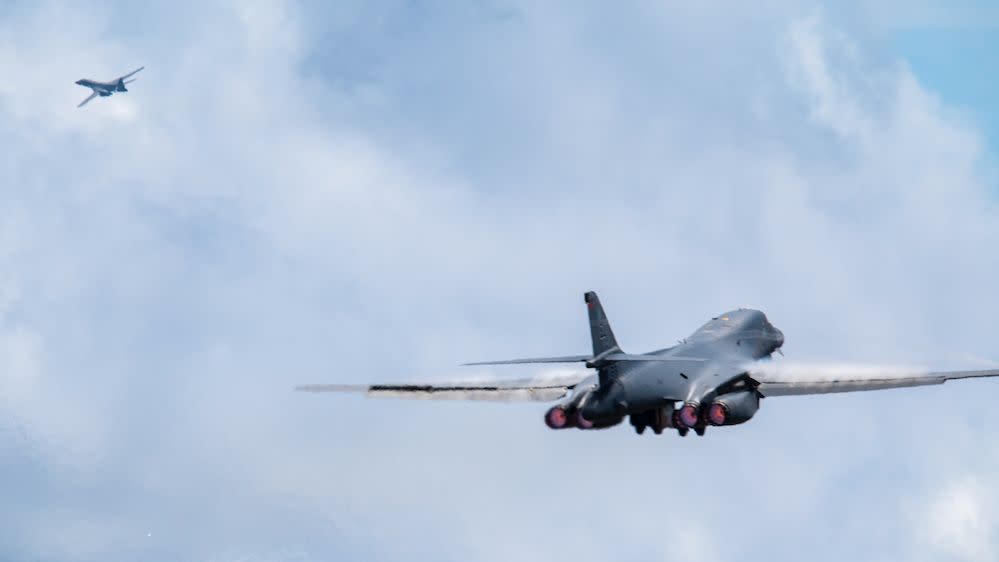
The Air Force’s main post on Guam is Andersen Air Force Base. Home of the 36th Wing, the sprawling base takes up approximately 18,000 acres and can accommodate up to 193 aircraft. The Air Force primarily uses the base as a staging area, both for forces operating regionally and for tankers supporting aircraft crossing the vast Pacific. The base doesn’t have any permanent aircraft assigned to it, but regular rotations of the Pacific Air Forces’ Bomber Task Force, as well as the Tanker Task Force, means there’s always a hefty amount of firepower on the tarmac. The U.S. Space Force, part of the Air Force, is represented on the island by Space Delta 8, which operates satellite control antennas and ground control stations on the island.
Another longtime Guam resident is the U.S. Navy. Naval Base Guam includes Apra Harbor, the westernmost U.S. anchorage. Apra not only serves as a pit stop for Ohio-class ballistic missile submarines in the Pacific, it’s also home to five American nuclear-powered attack submarines. The Los Angeles-class submarines Key West, Asheville, Annapolis, Springfield, and Jefferson City are all forward-deployed in Guam. The forward deployment allows the submarines to skip the 5,900-mile voyage from the West Coast, allowing them to spend more time in their patrol zones in the western Pacific. The submarines would also have a quicker turnaround in wartime, allowing them to return to combat sooner.
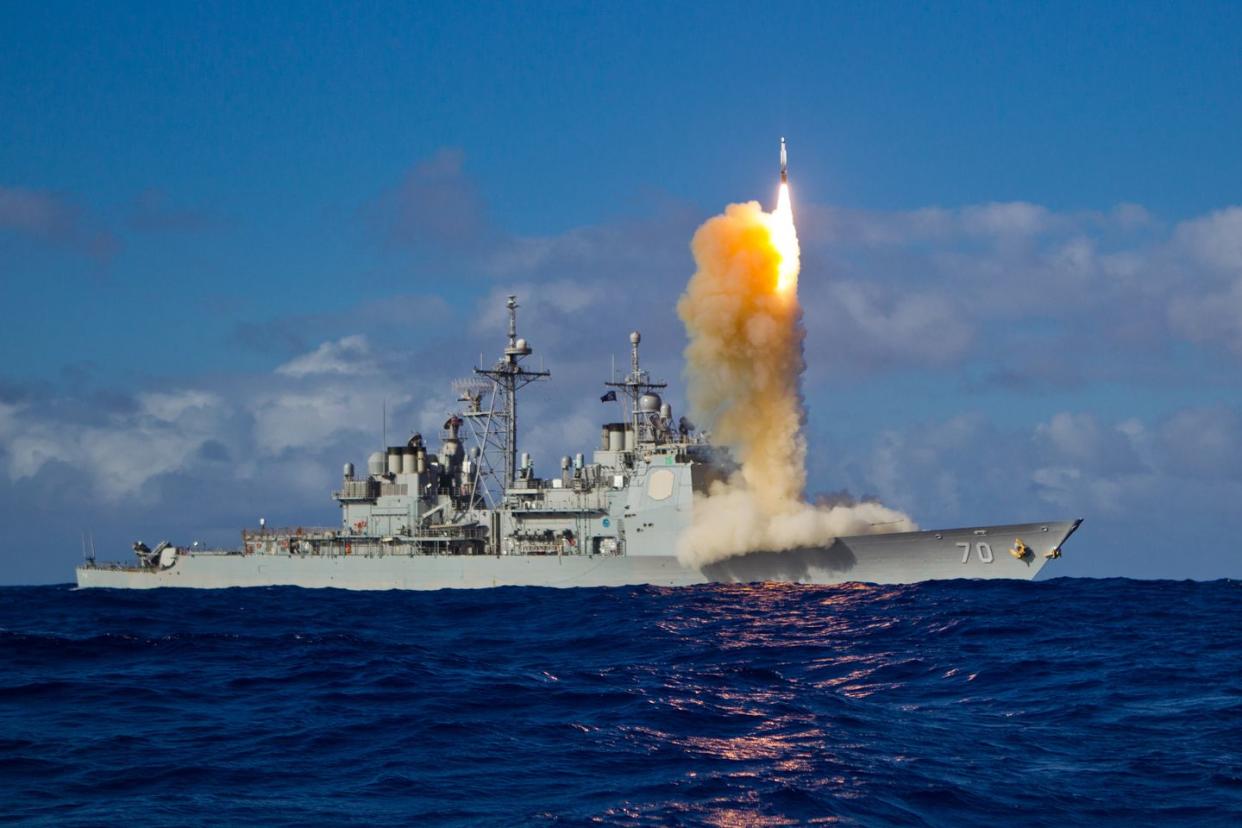
In addition to Apra, the Navy allocates three or four guided missile destroyers to the island’s defense in wartime. At least one destroyer would be on guard at all times, using its Aegis combat system and SM-3 Block 1B interceptors to destroy incoming ballistic missiles. The Navy would like to see the destroyers replaced with Aegis Ashore, a land-based version of the Aegis/SM-3 pairing, freeing them up for other missions.
The Marine Corps is in the process of boosting its presence on the island, shifting some of its III Marine Expeditionary Force away from the Japanese island of Okinawa, where it is more vulnerable, to the more distant Guam. The Marines will permanently base 1,300 personnel at the newly established Camp Blaz, with another 3,700 regularly rotated from the continental United States and Hawaii to the island on training missions.
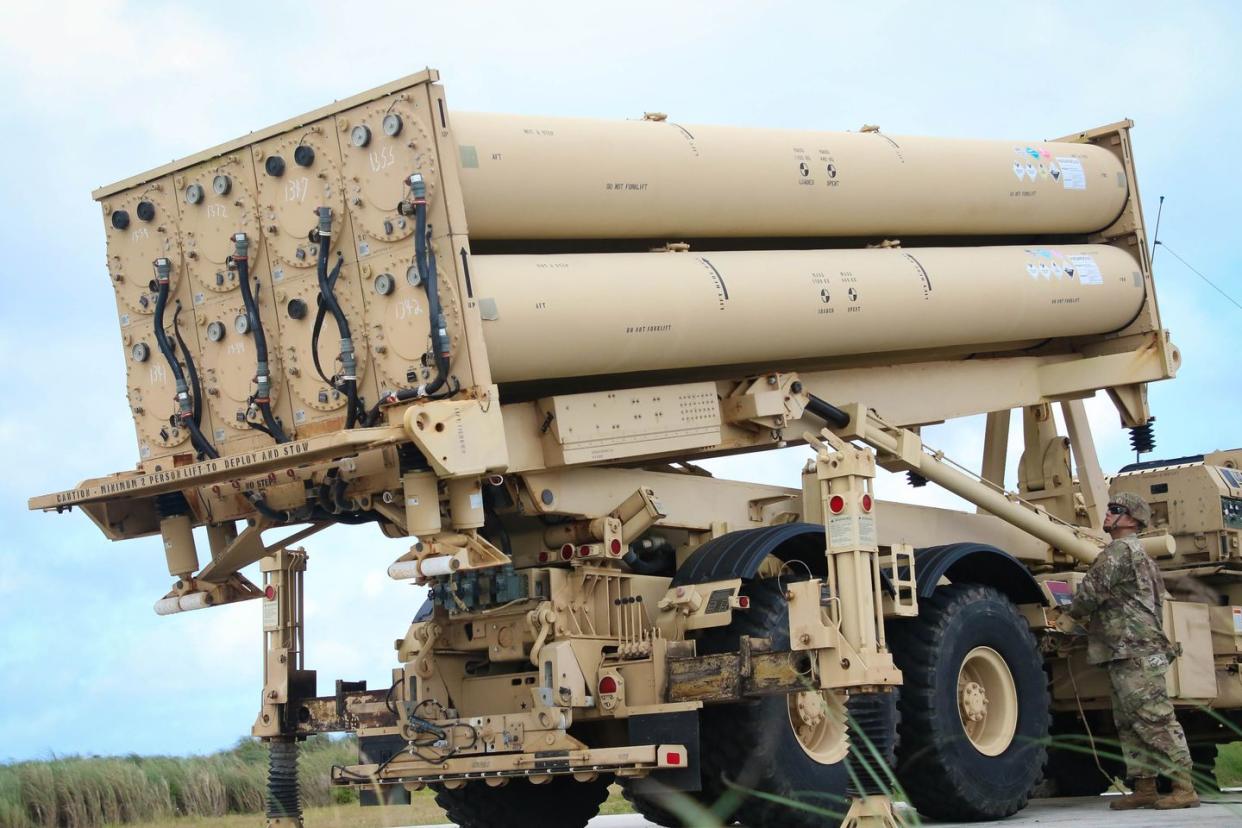
In response to North Korean ballistic missile testing and saber-rattling, the Army deployed a Terminal High Altitude Area Defense (THAAD) battery to Guam in 2014. The battery has stayed on ever since, and now provides protection against Chinese ballistic missiles. A typical THAAD battery includes the AN/TPY-2 radar and six launch vehicles, each equipped with eight missiles. THAAD provides area defense of the entire island, and the Army is under pressure to expand its defenses by deploying Patriot PAC-3 missile batteries that can defend specific locations from incoming ballistic missile warheads, such as air and naval bases.
Despite Guam’s distance from the Asian mainland, the territory is still vulnerable to missile strikes. In the 1980s and 1990s, China—unable to afford the development of a manned bomber—poured its meager resources into cheaper ballistic missiles with conventional, high-explosive warheads. As a result, China has an abundance of long-range missiles, including the DF-26 intermediate-range ballistic missile. Known as the “Guam Express,” the DF-26 can reach Guam in 30 minutes or less, and can deliver up to two tons of high explosives to within 500 feet of a target. This makes it, as well as subsonic cruise missiles, a major threat to military installations across Guam.
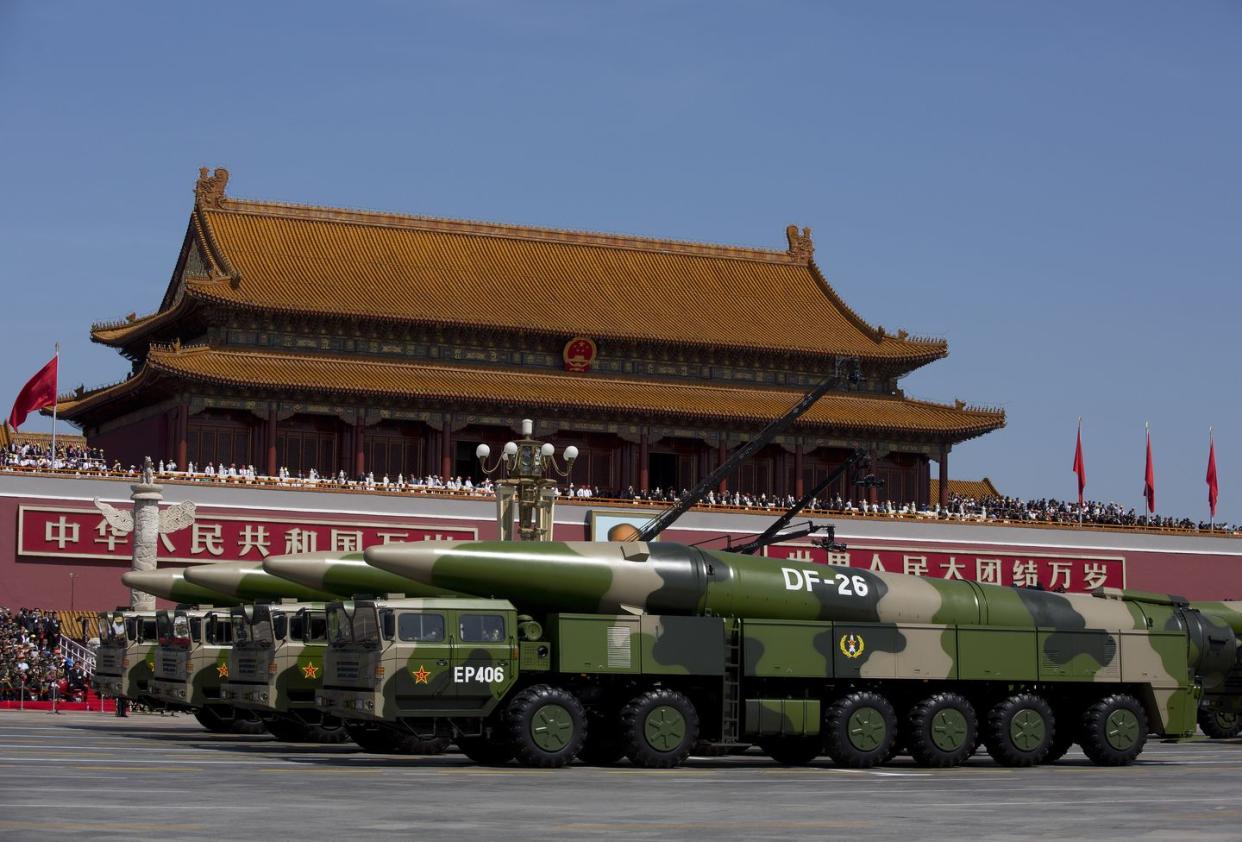
Would China attack Guam? Since 1991, China has watched again and again as the U.S. uses its advantage in overseas bases to support wars in Iraq, Afghanistan, and elsewhere. If China invades Taiwan or moves against Japan—both of which have the protection of American military power—Guam will be an indispensable location for projecting that power. If China wants a free hand in the Pacific without American interference, Guam and bases like it have to go. How to protect Andersen, Apra, and bases like them will be one of the major military challenges of the 21st century.
You Might Also Like
